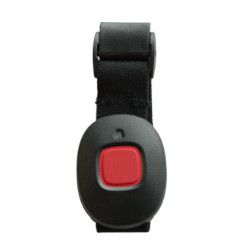Paikantaminen sisätiloissa
Locating persons in distress indoors is easy to realize with custom on-site beacons connected to compatible lone worker alarm devices.
Kulunvalvonta
Tags and door sensors are easy and fast to add to door openings for registration of persons carrying a SRD compatible personal alarm device.
Huomaamaton käyttö
Smaller than any personal alarm device, a wearable button is light and discreet to carry and helpful to remotely control a paired and nearby situated personal alarm device.
Indoor, outdoor and ATEX areas
TWIG Beacon locating devices are available for indoor and outdoor use as well as for explosive hazardous areas.
Modulaarinen järjestelmä
TWIG personal alarm device can operate with several TWIG short range devices (SRD) at the same time.
Soveltuvuus moniin tarpeisiin
Attendance monitoring, check-in / check-out points, logistics management and many other...
Hybridipaikannus SRD3-optiolla
TWIG personal alarm devices equipped with SRD3 option refine on-site beacon location coverage with Wi-Fi and BLE locations.
Helppo ottaa käyttöön
Tarvitset vain SRD-yhteensopivan TWIG-henkilöhälyttimen TWIG SRD-lisälaitteet kommunikoivat TWIG-henkilöhälyttimen SRD-vastaanottimen kanssa kaksisuuntaisen RF-linkin kautta 869 MHz ISM –taajuudella.


